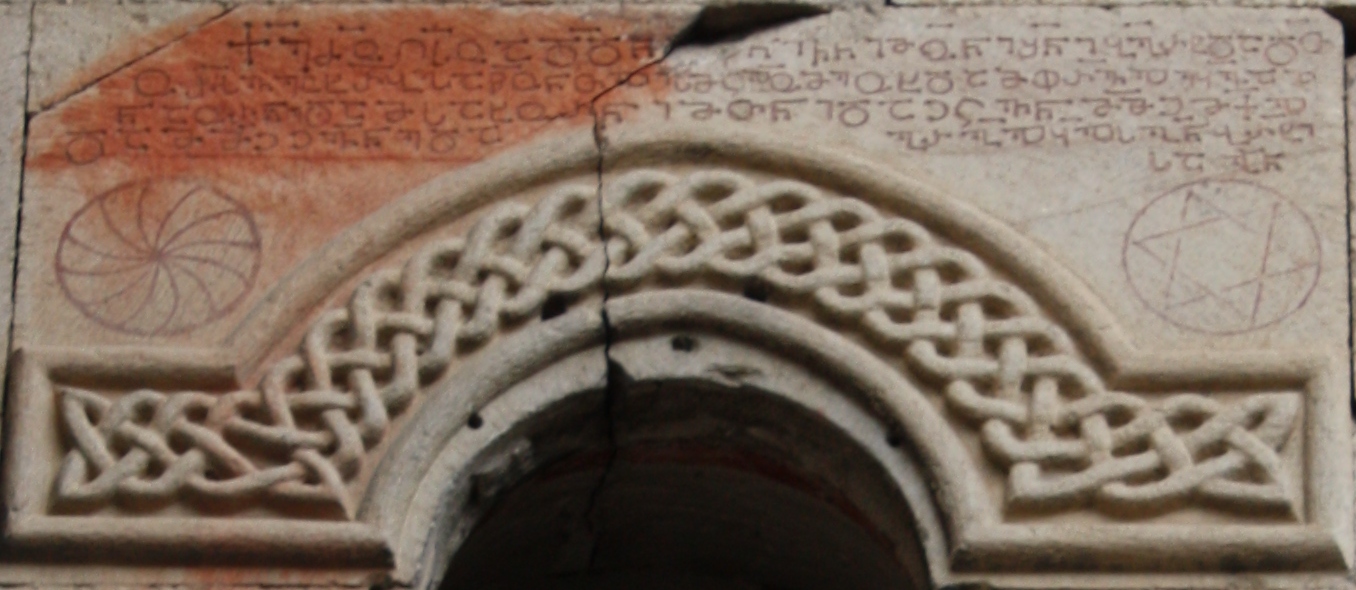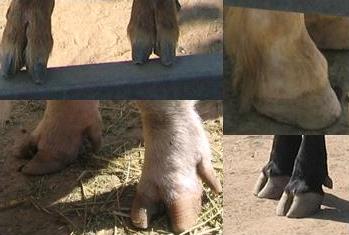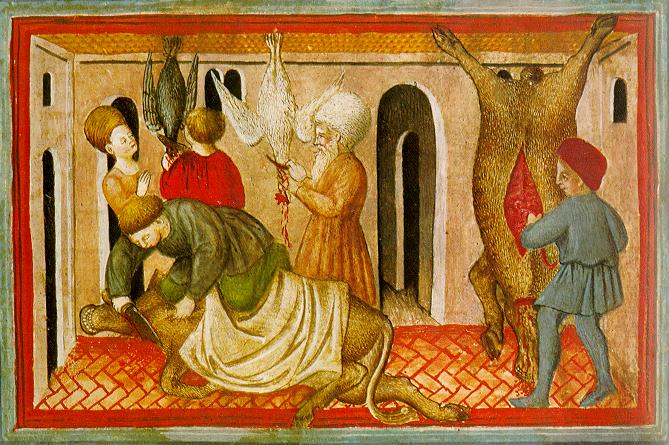|
United Hebrew Congregation (Chesterfield, Missouri)
The United Hebrew Congregation (also Congregation Achdut Yisroel) is a Reform Judaism, Reform Jewish synagogue located at 13788 Conway Road in Chesterfield, Missouri, Chesterfield, a western suburb of St. Louis, Missouri, in the United States. It was the Oldest synagogues in the United States, first Jewish Congregation established west of the Mississippi River. History 19th century The United Hebrew Congregation formed on Rosh Hashannah, Erev Rosh Hashannah, the evening of September 29, 1837, when ten members rented a room in St. Louis for services. The location was either above a store called "Max's Grocery and Restaurant" at Second and Spruce Streets, or an "R.A. Mack's" grocery store at 54 N. Front Street. The exact year this minyan was organized has not been definitely determined. Abraham Weigel, who was to become United Hebrew Congregation's first president, and Nathan Abeles, the first secretary, rented a room over a grocery and held the first minyan in St. Louis. Loui ... [...More Info...] [...Related Items...] OR: [Wikipedia] [Google] [Baidu] |
Reform Judaism
Reform Judaism, also known as Liberal Judaism or Progressive Judaism, is a major Jewish religious movements, Jewish denomination that emphasizes the evolving nature of Judaism, the superiority of its Jewish ethics, ethical aspects to its ceremonial ones, and belief in a continuous revelation which is closely intertwined with human reason and not limited to the Theophany at Mount Sinai (Bible), Mount Sinai. A highly Religious liberalism, liberal strand of Judaism, it is characterized by little stress on ritual and personal observance, regarding Jewish law as non-binding and the individual Jew as autonomous, and by a great openness to external influences and Progressivism, progressive values. The origins of Reform Judaism lie in German Confederation, mid-19th-century Germany, where Rabbi Abraham Geiger and his associates formulated its early principles, attempting to harmonize Jewish tradition with modern sensibilities in the age of Jewish emancipation, emancipation. Brought to Am ... [...More Info...] [...Related Items...] OR: [Wikipedia] [Google] [Baidu] |
Orthodox Judaism
Orthodox Judaism is a collective term for the traditionalist branches of contemporary Judaism. Theologically, it is chiefly defined by regarding the Torah, both Torah, Written and Oral Torah, Oral, as literally revelation, revealed by God in Judaism, God on Mount Sinai (Bible), Mount Sinai and faithfully transmitted ever since. Orthodox Judaism therefore advocates a strict observance of Jewish Law, or ''halakha'', which is to be Posek, interpreted and determined only according to traditional methods and in adherence to the continuum of received precedent through the ages. It regards the entire ''halakhic'' system as ultimately grounded in immutable revelation, essentially beyond external and historical influence. More than any theoretical issue, obeying the Kosher, dietary, Tumah and taharah, purity, ethical and other laws of ''halakha'' is the hallmark of Orthodoxy. Practicing members are easily distinguishable by their lifestyle, refraining from doing 39 Melakhot, numerous rou ... [...More Info...] [...Related Items...] OR: [Wikipedia] [Google] [Baidu] |
Town And Country, Missouri
Town and Country is a city in west St. Louis County, Missouri, United States with a population of 11,640 as of the 2020 census. Town and Country has the highest median household income ($134,387 in 2009) of any city in Missouri with a population over 10,000 and also has one of the highest median incomes of any city in the United States. The city is included in the St. Louis, MO-IL Metropolitan Statistical Area, and is home to Bellerive Country Club, which hosted the 1965 U.S. Open, the 1992 PGA Championship, and the 2018 PGA Championship. Geography According to the United States Census Bureau, the city has a total area of , all land. History Town and Country was incorporated in 1950 as a village, and re-incorporated as a fourth-class city 25 years later. Demographics 2020 census The 2020 United States census counted 11,640 people, 4,033 households, and 3,333 families in Town and Country. The population density was . There were 4,159 housing units at an average density of ... [...More Info...] [...Related Items...] OR: [Wikipedia] [Google] [Baidu] |
Missouri Historical Society
The Missouri Historical Society was founded in St. Louis on August 11, 1866. Founding members created the historical society "for the purpose of saving from oblivion the early history of the city and state". Organization The Missouri Historical Society operates the Missouri History Museum in St. Louis' Forest Park (St. Louis), Forest Park, as well as the Library and Research Center. Admission to the museum and library are free to the public. Library and Research Center The Library and Research Center houses a regional history collection documenting St. Louis, the Mississippi and Missouri Valleys, the Louisiana Purchase Territory, and the American West. The Library and Research Center collections include: * Library Collections * Manuscript Collections * Photographs and Prints * Architecture Collections * Broadcast Media Archives * Museum Collections No appointment is needed to view the library and manuscript collections, but is required for other collections. Among it ... [...More Info...] [...Related Items...] OR: [Wikipedia] [Google] [Baidu] |
Byzantine Revival
Neo-Byzantine architecture (also referred to as Byzantine Revival) was a revival movement, most frequently seen in religious, institutional and public buildings. It incorporates elements of the Byzantine style associated with Eastern and Orthodox Christian architecture dating from the 5th through 11th centuries, notably that of Constantinople (present-day Istanbul) and the Exarchate of Ravenna. Neo-Byzantine architecture emerged in the 1840s in Western Europe and peaked in the last quarter of the 19th century with the Sacré-Coeur Basilica in Paris, and with monumental works in the Russian Empire, and later Bulgaria. The Neo-Byzantine school was active in Yugoslavia in the interwar period. Russian Empire Sophia Cathedral in Pushkin (1782–1788) was the earliest and isolated experiment with Byzantine treatment of otherwise neoclassical structures. In 1830s Nicholas I of Russia promoted the so-called ''Russo-Byzantine'' style of churches designed by Konstantin Thon. Nich ... [...More Info...] [...Related Items...] OR: [Wikipedia] [Google] [Baidu] |
Clayton, Missouri
Clayton is a city in and the county seat of St. Louis County, Missouri, and borders the independent city of St. Louis. The population was 17,355 at the 2020 census. Organized in 1877, the city was named after Ralph Clayton, a citizen who donated the land for the St. Louis County courthouse. Geography Cityscape The architecture of central Clayton reflects its economic activity and eras of growth. An impressive collection of mid-century modern low and high rise structures contrast with earlier mansions, stores and flats. Its surrounding residential neighborhoods maintain a dense, walkable character and were largely developed in the pre-war era. These neighborhoods consist of brick walkups, apartment buildings, mansions and modest single family homes centered around several small business districts. Neighborhoods Claverach Park Claverach Park is a residential neighborhood bounded by Wydown Boulevard on the north, Ridgemoor Drive and Big Bend Boulevard on the east, Clayto ... [...More Info...] [...Related Items...] OR: [Wikipedia] [Google] [Baidu] |
Star Of David
The Star of David (, , ) is a symbol generally recognized as representing both Jewish identity and Judaism. Its shape is that of a hexagram: the compound of two equilateral triangles. A derivation of the Seal of Solomon was used for decorative and mystical purposes by Kabbalah, Kabbalistic Jews and Muslims. The hexagram appears occasionally in Jewish contexts since antiquity as a decorative motif, such as a stone bearing a hexagram from the arch of the 3rd–4th century Khirbet Shura synagogue. A hexagram found in a religious context can be seen in a Leningrad Codex, manuscript of the Hebrew Bible from 11th-century Cairo. Its association as a distinctive symbol for the Jewish people and their religion dates to 17th-century Prague. In the 19th century, the symbol began to be widely used by the History of the Jews in Europe, Jewish communities of Eastern Europe, ultimately coming to represent Jewish identity or religious beliefs."The Flag and the Emblem" (MFA). It became repr ... [...More Info...] [...Related Items...] OR: [Wikipedia] [Google] [Baidu] |
Kosher
(also or , ) is a set of dietary laws dealing with the foods that Jewish people are permitted to eat and how those foods must be prepared according to Jewish law. Food that may be consumed is deemed kosher ( in English, ), from the Ashkenazi pronunciation of the term that in Sephardi or Modern Hebrew is pronounced ''kashér'' (), meaning "fit" (in this context: "fit for consumption"). Food that may not be consumed, however, is deemed treif ( in English, ), also spelled treyf (). In case of objects the opposite of kosher is pasúl ( in English, Yiddish: פָּסוּל). Although the details of the laws of are numerous and complex, they rest on a few basic principles: * Only certain types of mammals, birds, and fish, meeting specific criteria are kosher; the consumption of the flesh of any animals that do not meet these criteria, such as pork, frogs, and shellfish, is forbidden, except for locusts, which are the only kosher invertebrate. * The most basic eating rule in ... [...More Info...] [...Related Items...] OR: [Wikipedia] [Google] [Baidu] |
Kashrut
(also or , ) is a set of Food and drink prohibitions, dietary laws dealing with the foods that Jewish people are permitted to eat and how those foods must be prepared according to halakha, Jewish law. Food that may be consumed is deemed kosher ( in English, ), from the Ashkenazi Hebrew, Ashkenazi pronunciation of the term that in Sephardi Hebrew, Sephardi or Modern Hebrew is pronounced ''kashér'' (), meaning "fit" (in this context: "fit for consumption"). Food that may not be consumed, however, is deemed treif ( in English, ), also spelled treyf (). In case of objects the opposite of kosher is pasúl ( in English, Yiddish: פָּסוּל). Although the details of the laws of are numerous and complex, they rest on a few basic principles: * Only certain types of mammals, birds, and fish, Kosher animals, meeting specific criteria are kosher; the consumption of the flesh of any animals that do not meet these criteria, such as pork, frogs, and shellfish, is forbidden, except ... [...More Info...] [...Related Items...] OR: [Wikipedia] [Google] [Baidu] |
Shechita
In Judaism, ''shechita'' (anglicized: ; ; ; also transliterated ''shehitah, shechitah, shehita'') is ritual slaughtering of certain mammals and birds for food according to ''kashrut''. One who practices this, a kosher butcher is called a ''shochet''. Biblical sources Deuteronomy 12:21 states that sheep and cattle should be slaughtered "as I have instructed you", but nowhere in the Torah are any of the practices of ''shechita'' described. Instead, they have been handed down in Rabbinic Judaism's Oral Torah, and codified in ''halakha''. Species The animal must be of a permitted species. For mammals, this is restricted to ruminants which have split hooves. For birds, although biblically any species of bird not specifically excluded in Deuteronomy 14:12–18 would be permitted, doubts as to the identity and scope of the species on the biblical list led to rabbinical law permitting only birds with a tradition of being permissible. Fish do not require kosher slaughter to be ... [...More Info...] [...Related Items...] OR: [Wikipedia] [Google] [Baidu] |







